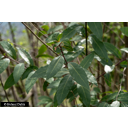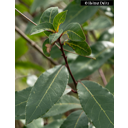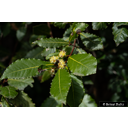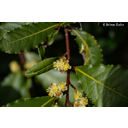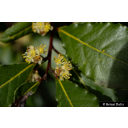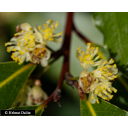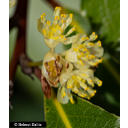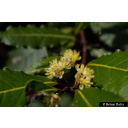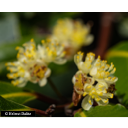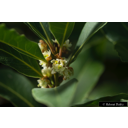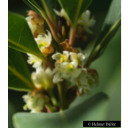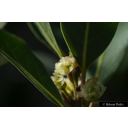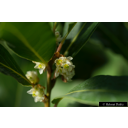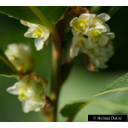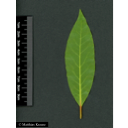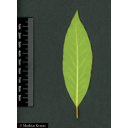Useful information about the taxon (species, subspecies, variety...)
Laurus nobilis L. 1753
Lauraceae
- Laurel family (APG IV)bay laurel, laurel, sweet bay, Grecian laurel, Mediterranean laurel, true laurel
Akzessionnummer: SYS-K-3771
Pflanzjahr: 0
Taxon concept: World Flora Online
Distribution: Europe: Iberian Peninsula, France and Benelux, Corsica, Apennine Peninsula, Balkan Peninsula; Turkey, Caucasian states; Israel, Syria, North Africa; introduced to the Crimean Peninsula
Laurus nobilis L. - Accepted: Laurus nobilis L. bei Zander 2008; Familie: Lauraceae (Zander 2008)Laurus nobilis L. - Accepted: Laurus nobilis L. bei The Plant List (2010); Familie: Lauraceae (APG III)Laurus nobilis L. - Accepted: Laurus nobilis L. bei The Plant List (2014), version 1.1; Familie: Lauraceae (APG III)Laurus nobilis L. - Accepted: Laurus nobilis L. bei The Plant List (2014), version 1.1; Familie: Lauraceae (APG IV)Laurus nobilis L. - Accepted: Laurus nobilis L. bei The Plant List (2010); Familie: Lauraceae (APG IV)
- Color of flower
- pale yellow
- Flowers
- dioecious
- Flower ecology
- insect-pollinated (entomophilous) (bees)
- Life form
- shrub or small tree
- Leaves
- coriaceous leaves
- Foliage persistence
- evergreen
- Fruits
- fruit is a black drupe
- Fruit ecology
- bird-dispersed (ornithochorous)
- Soil conditions
- preferentially on moist limestone soils
- Root type
- shallow root system
- Natural occurrence (habitat)
- woodlands, scrub, sea cliffs, dunes, coastal shrubland, humid canyons and valleys, river banks, road sides, relict laurel forests ("Laurus nobilis thickets")
- Comment to ecology
- relict species of the laurel forests
- Vegetation typ and synecology (plant community)
- Mediterranean, broad-leaved evergreen, sclerophyllous forests, woodlands and shrubs
- Constraints according moisture
- drought tolerant
- Usage
- as spice plant; as medicinal plant: astringent, appetising, carminative, digestive and diuretic properties, used against respiratory afflictions; laurel oil obtained from the fruits (Oleum Lauri) can be used in the treatment of sprains and rheumatism, and as an insect repellent due to the lauric acid content; used in perfumery; as ornamental plant
Erhardt, W., Götz, E., Bödeker, N. & Seybold, S. (2008): Der große Zander. Enzyklopädie der Pflanzennamen. Band 2. Arten und Sorten. Eugen Ulmer KG, Stuttgart (Hohenheim), 18. Aufl., 2103 S.; The International Plant Names Index (2009). Published on the Internet http://www.ipni.org; Courtesy to IPNI, 2009. Exported from IPNI at date: 2009-09-22 20:17:51;
Diese Webseite verwendet Google Maps, um Karten und Standorte von Pflanzen in den Hohenheimer Gärten anzuzeigen. Dadurch werden unter Umständen Daten an Google weitergeleitet, was mit einer Verarbeitung Ihrer personenbezogenen Daten verbunden sein kann. Die Datenschutzerklärung von Google finden Sie hier: Datenschutzerklärung von Google

